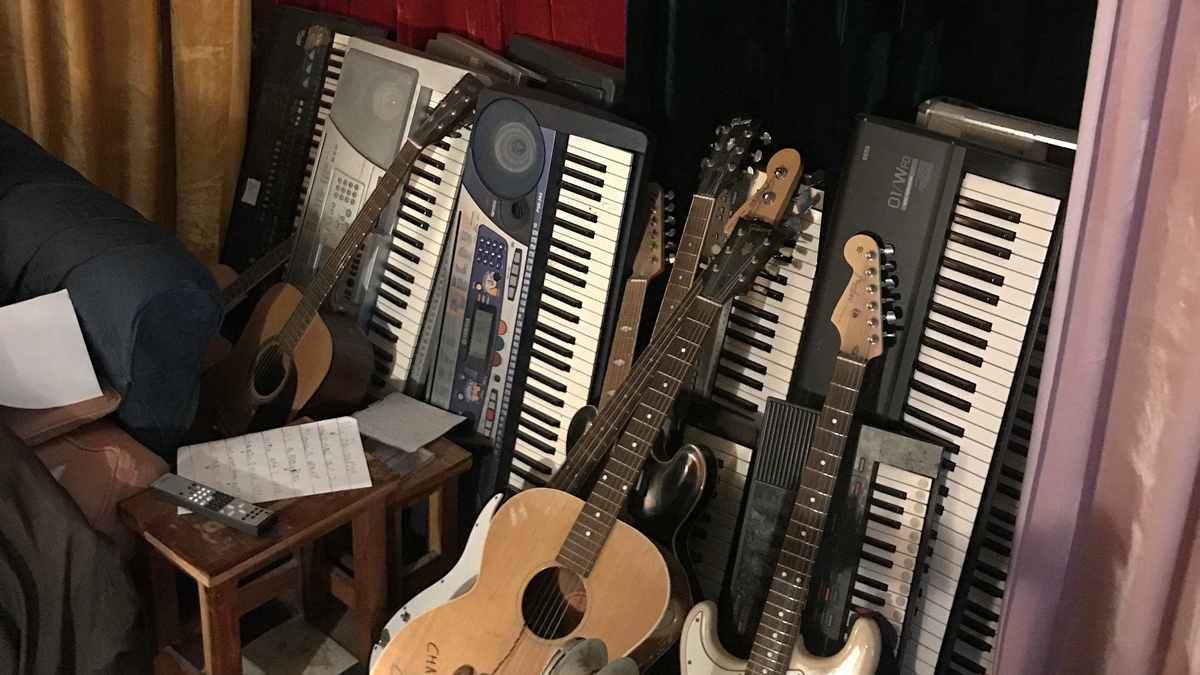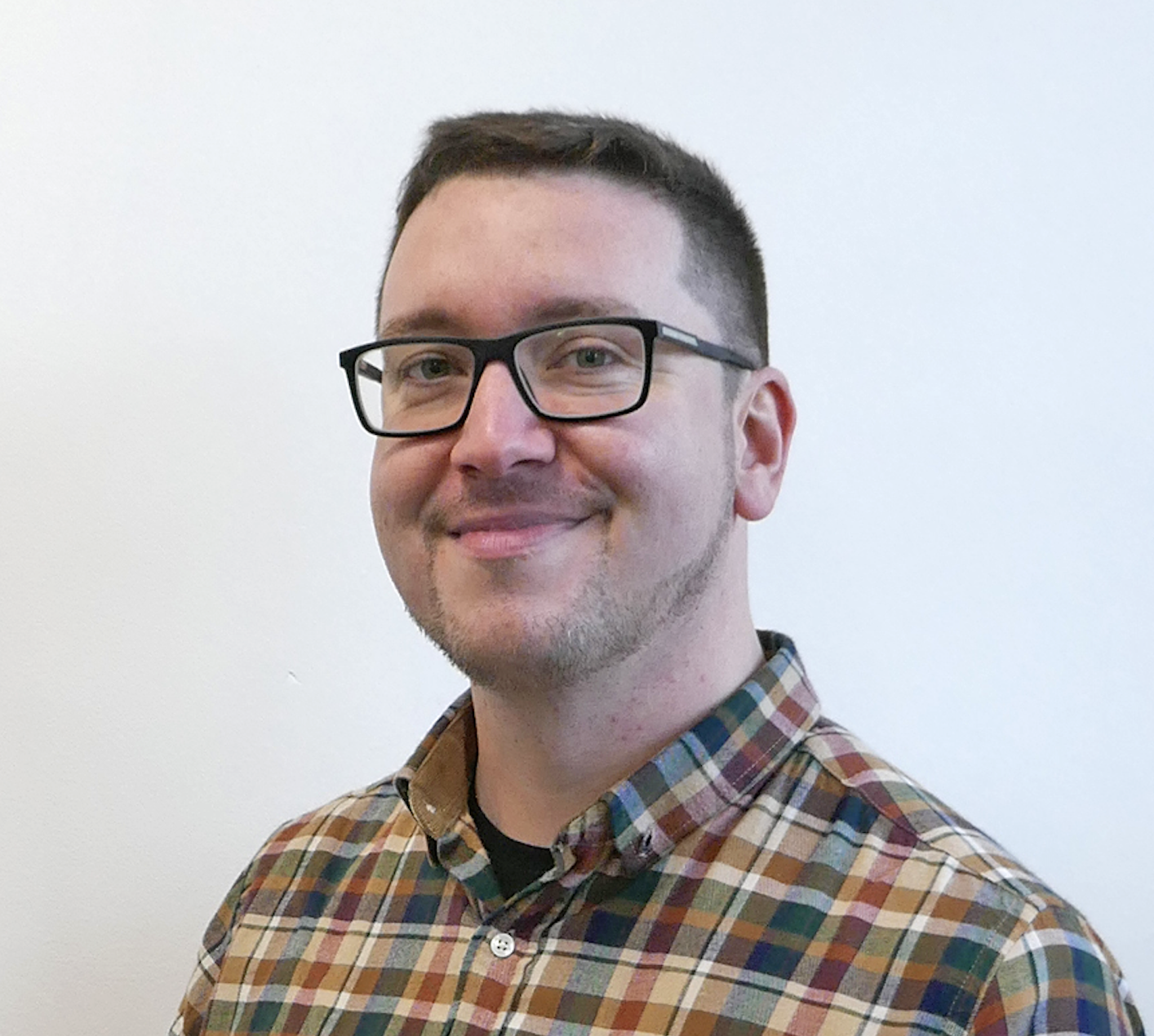Fyfe Dangerfield: “I have such lofty musical hopes for everything I write. I just don’t want to compromise”
Marrying unabashed romance with a diverse musical armoury, the former Guillemots frontman has re-emerged with a new EP, birthed from adventures both real and digital

“I’ve realised that I can make anything I want, and put it out within five minutes of bouncing it down. I don’t have to shape it to suit a record label. As a creative, that’s amazing.”
So says an animated Fyfe Dangerfield; the former - and, technically, still - frontman of the beloved Guillemots has been little seen since the band’s fourth LP Hello Land! marked the end of the art rock eclecticists’ run. As lead vocalist and principal songwriter, Dangerfield explains that the band’s under-explained hiatus is no full stop, and came as a reaction to material not meeting their high quality bar.
“We were going to do four albums in 2012 - one for each season,” Fyfe explains. “The summer record became a portal into another dimension; we realised we couldn’t put it out in the state it was in, and we started adding electronics and further instrumentation and it just ended up becoming a monster. I really didn’t want to compromise on it for the sake of meeting a schedule. So we ended up putting things on ice. That music is still unreleased and on the shelf - ageing like fine wine!”
The group paused all activity, allowing Fyfe to focus on making music on his own terms, continuing a journey initiated by his 2010’s solo debut Fly Yellow Moon. “I loved being in the band, but it was freeing to not have that as the main thing,” he admits.
Changing channels
Fyfe’s mesmerising new EP, The Birdwatcher, compiles several tracks that first appeared on his website, channelsmaychange.com - the de facto platform for Dangerfield’s creative output. Spanning fully-fledged songs, sound collages, skits, samples and more sonic curios, Fyfe’s creative pursuits were carefully compiled, and broadcast over the last three years.
I was always playing the in-progress tracks to my friends, then I just wondered why I didn’t just treat the whole world like that? Release stuff as I’m working on it.
“I was planning to make a new solo album in 2017, which grew into a double-album, then a triple-album, then a quadruple-album. I have such lofty musical hopes for everything I write. I just don’t want to compromise.”
At the start of 2018, Fyfe was struck by a realisation. “I was always playing the in-progress tracks to my friends, then I just wondered why I didn’t just treat the whole world like that? Release stuff as I’m working on it. Even if I know I want to come back to it later and polish it, or do different versions.”
Get the MusicRadar Newsletter
Want all the hottest music and gear news, reviews, deals, features and more, direct to your inbox? Sign up here.
After building his site, Dangerfield began curating several in-progress ideas to release in episodic form, as a series of weekly web radio broadcasts. “I didn’t just want to put a bunch of MP3s online, I wanted to make it enticing. So, I created this sonic universe, and I liked the idea of breaking it into episodes. Suddenly, anything could go in there. I called it the Birdwatcher series. It felt like now was the right time to put out this EP, which includes tracks from that series.”
Mutating and shifting
The loose, sketchbook nature of the Birdwatcher series encouraged Fyfe to weave in tracks that had been gestating for the best part of a decade. The 11-minute Lochinver - found on the EP - is one such example.
“That was started in this place called Lochinver in the highlands of Scotland in 2011,” remembers Dangerfield. “I took a little writing holiday which I’d never done before. I found this beautiful place, and quite often I would just go walking with my laptop, headphones and a guitar. I just started writing by improvising into my MacBook’s mic. I had some lyrics from a stream of consciousness writing session. That was how that track started. It was built from 15 to 20 minutes of playing my acoustic guitar.”
Fyfe confirms that this, and the track Laying There, are the two oldest compositions on the six-track EP. “I am a great believer in ideas just bubbling up.I like to live with things for a while and suddenly, a stroke of inspiration may hit.”
Free of any external tinkering, Fyfe pursued more of these less conventional musical visions. “It’s a different process when you’re in a band, as you have to communicate your ideas to others, or to engineers. But when you’re self-writing and self-producing you can maintain your vision. I learned how to use Logic so I could achieve this. I had a long period of time where I thought I was terrible at using it, but now I’m perfectly in tune with it to serve my needs. I know what I’m doing. I’ve found my tricks and I’ve found my processes. Which is so satisfying.”

The EP’s evolving atmospherics, beguiling vocals and enthralling hooks were carved out of a heady stew of raw material.
“There’s a certain sound I’ve striven for,” Fyfe explains. “A sound that’s always mutating and shifting. It’s very time-consuming but it works. I like throwing hundreds of ideas at a track and then just comfortably editing it with my laptop and headphones, culling like 85% of what I’ve done. You just keep the elements you need, like one and a half seconds of a random keyboard improvisation. It’s lovely, and you gradually stitch together this patchwork quilt. It’s a long process, but you can make some quite fascinating textures.”
Mixing the tracks took on a similarly spontaneous approach: “When I discovered how you can Latch on Logic, and adjust panning and volume as you’re listening, I was so absorbed. Whenever I was listening to the mix on one channel I would shift the volume up and down, turning it left and right - making it seem more alive.”
Fyfe’s mix-as-you-go approach also had bearing on his performances: “It makes such a difference to me to apply reverb to my monitor if I’m laying down a vocal part. It enhances my performance, to hear the way that it sounds - it affects how I feel about it.”
The chocolate factory
In the real world, Dangerfield’s creative HQ is housed within a former Turkish Delight factory in North East London. “My studio is in here, and I live here too. It’s a mad building but it’s a nice shared creative space. I’ve got two rooms which house a piano and a drum kit.
“Getting a drum kit was a big deal. it’s great to just start playing around with drums in my own space.”
In terms of studio tech, Dangerfield is keeping things minimal: “I’ve got some kit that I bought back in the Guillemots days, but I mainly just work straight into Logic and my soundcard, putting everything through a few API preamps. I’m planning on upgrading as soon as I can.”
It’s clear that unrestricted music-making is Fyfe’s sole focus, claiming: “I don’t see myself as a songwriter. I never actually intended to be a singer, but it just kind of happened. I know I can do that - play the piano and sing - so I naturally end up making stuff that requires a voice. But I really don’t think of myself as a songwriter.”
Among the EP’s many high points - from the dawning tranquility of lead single Woah! Life, the classy, sophisticated title track, and the emotive heft of Lochinver - Fyfe showcases a vocal dexterity that ascends the octaves and leaps into an effortless falsetto. It’s the record’s kaleidoscopic mixes that first seize the attention, though.

“A lot of it is just processed guitars, piano and keyboard - there’s live drums too, of course,” illuminates Fyfe. “There’s fake piano and real piano. I generally can’t stand the way sampled pianos sound if you’re trying to make them sound real and live. I tend to apply much more reverb. Guitars are here and there - on Lochinver there’s some strummed acoustics and there’s a little Brian May-esque, double-harmony lead work. I liked doing that. It’s just trying to think of what every little moment needs. It’s finding the balance between it being too fussy or filling up sound for the sake of it”
Found sound and audio snippets creep around many of the mixes, too, with sound collages linking the more composed material.
“Sometimes I’ll be playing along to the track in real-time and sounds creep in. I just use bits and pieces. Sometimes I’m consciously trying to find sounds, but more often than not they just find their way in there. It’s that thing, once you’re in a ‘state of flow’ you lose a bit of awareness of what you’re doing.”
Taking flight
Marking Fyfe’s first release proper since 2010, The Birdwatcher is merely the start of a planned series. “There’s another two or three tracks that could have built this out into an album but it didn’t seem right to lump them together with these tracks, as they have a special symmetry,” he says. “This EP is just the tracks from the first two episodes. Lots of other tracks from the series will come out over the next few years in various forms.”
It’s clear that Dangerfield’s sights are squarely set on these vibrant solo endeavours, but we can’t help but ask if we can ever expect a Guillemots reformation?
“Yes, definitely,” he confirms without hesitation. “We’re all on good terms and are all still in touch. I’m sure we’ll all do stuff together again. It’s never going to be the main thing in our lives again, but I loved playing with those guys. Guillemots was just a lovely experience, our core as a band was focused on discovery. It was magic. I don’t see why we wouldn’t play live again.”
Endearingly evading the pigeon-hole, Fyfe Dangerfield’s new material is clearly the product of an artist enamoured by the possibility of music. “The only way to make it work is to accept that I’m never going to be happy just making one type of music - I need opposites,” he admits. “I skip between tracks and never squarely focus on one project at a time. It’s good to have palette cleansers. I much prefer that really. A constant variety.”
The Birdwatcher EP is released on 5 March. For more Fyfe Dangerfield info, and to listen to each episode of the Birdwatcher series, visit channelsmaychange.com



I'm the Music-Making Editor of MusicRadar, and I am keen to explore the stories that affect all music-makers - whether they're just starting or are at an advanced level. I write, commission and edit content around the wider world of music creation, as well as penning deep-dives into the essentials of production, genre and theory. As the former editor of Computer Music, I aim to bring the same knowledge and experience that underpinned that magazine to the editorial I write, but I'm very eager to engage with new and emerging writers to cover the topics that resonate with them. My career has included editing MusicTech magazine and website, consulting on SEO/editorial practice and writing about music-making and listening for titles such as NME, Classic Pop, Audio Media International, Guitar.com and Uncut. When I'm not writing about music, I'm making it. I release tracks under the name ALP.
“For some reason, the post office shipped your guitar to Jim Root of Slipknot”: Sweetwater mailed a metal fan's Jackson guitar to a metal legend
"No one phoned me. They never contacted me and I thought, 'Well, I'm not going to bother contacting them either'": Ex-Judas Priest drummer Les Binks has died aged 73









